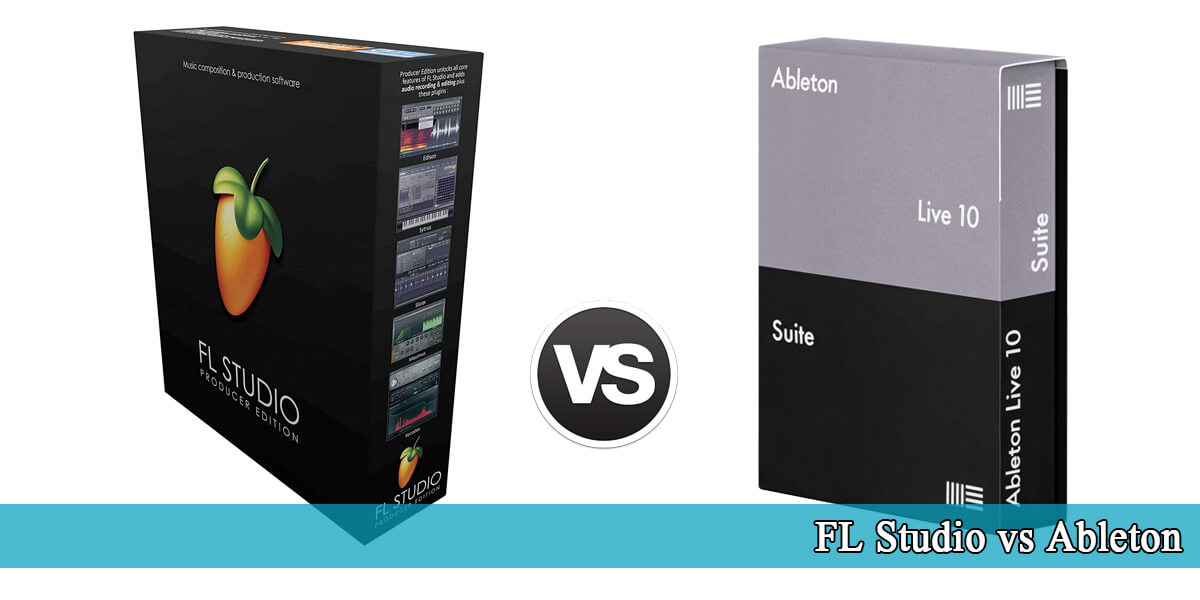

- #FL STUDIO VS ABLETON 2016 FULL#
- #FL STUDIO VS ABLETON 2016 PRO#
- #FL STUDIO VS ABLETON 2016 SOFTWARE#
On the other hand, we have Live, developed by the company Ableton. So yes, chances are anyone you ask, has used FL Studio in the past! It has been widely known in the professional world among DJs and producers because of its 20 years of experience. The company designed FL Studio as an all-in-one solution for producing electronic-oriented music where samples, virtual instruments, and digital processing is needed. Stand-by, read this article and at the end, I promise you will know which one to choose!įL Studio is a digital audio workstation developed by the company Image-Line.
#FL STUDIO VS ABLETON 2016 PRO#
I mean, there are others, right? Cubase, Logic, Pro Tools, Reaper, Garage Band, Audition, Repear…
#FL STUDIO VS ABLETON 2016 FULL#
I know where you are, you have been reading and the whole internet says the same thing…ĬPU with at least 2 GHz with full SSE1 support, 4 GB of RAM.Īt least 6 GB of free space, multi-core processor (dual, quad, etc), and a minimum of 4 GB of RAM. From Steinberg Cubase and Avid Pro Tools, PreSonus Studio One and Apple Logic Pro, MOTU Digital Performer to Ableton Live, Reason Studios Reason and Cockos Reaper, you'll find how-to techniques and tips for all of these and other DAWs collected under the sections shown above.Maybe you have some ideas in mind about writing some songs or perhaps producing for someone else?
#FL STUDIO VS ABLETON 2016 SOFTWARE#
There are many popular software DAWs and Sound On Sound regularly covers all the top brands in its monthly DAW Masterclasses.

Portability: DAWs can be used on a variety of devices, including computers, laptops, and tablets, making it easier to work on audio projects from anywhere.Collaboration: Many DAWs offer features that allow users to collaborate and work on projects remotely, making it easier to work with others on audio projects.Flexibility: DAWs offer a wide range of tools and features that allow users to customize their audio production process and achieve the desired results.

Efficiency: DAWs allow users to quickly and easily record, edit, and produce audio, saving time and effort compared to traditional analog methods.Some of the main benefits of using a DAW include: Mastering: DAWs offer tools and features for mastering audio, such as loudness normalization and EQ adjustments to ensure that the final audio product meets industry standards. Mixing: DAWs allow users to mix multiple audio tracks together, adjusting levels, panning, and applying effects to create a cohesive final product. They also offer a variety of tools for cleaning up and enhancing audio, such as noise reduction, EQ, and compression. Recording: DAWs allow users to record audio from a variety of sources, such as microphones, instruments, and MIDI controllers.Įditing: DAWs allow users to edit audio files by cutting, copying, pasting, and rearranging sections of audio. The main functions of modern-day DAW software include: It is used in many different settings, including music production, sound design, game audio, film and television post-production, and podcasting. A DAW ( digital audio workstation) is a software program that allows users to record, edit, and produce audio files.


 0 kommentar(er)
0 kommentar(er)
